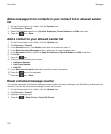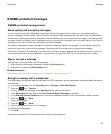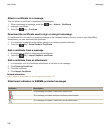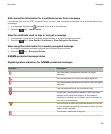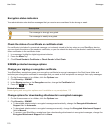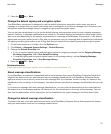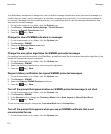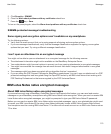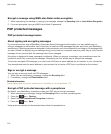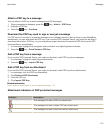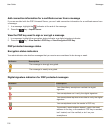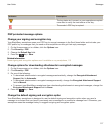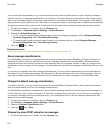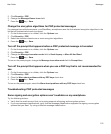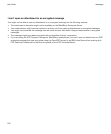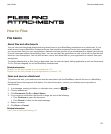
Encrypt a message using IBM Lotus Notes native encryption
1. When composing, forwarding or replying to a message, change the Encoding field to Lotus Notes Encryption.
2. If you are prompted, type your IBM Lotus Notes ID password.
PGP protected messages
PGP protected message basics
About signing and encrypting messages
If your email account uses a BlackBerry Enterprise Server that supports this feature, you can digitally sign or
encrypt messages to add another level of security to email and PIN messages that you send from your BlackBerry
smartphone. Digital signatures are designed to help recipients verify the authenticity and integrity of messages that
you send. When you digitally sign a message using your private key, recipients use your public key to verify that the
message is from you and that the message hasn't been changed.
Encryption is designed to keep messages confidential. When you encrypt a message, your smartphone uses the
recipient’s public key to encrypt the message. Recipients use their private key to decrypt the message.
To send an encrypted PIN message, you must have a PIN and an email address for the contact in your contact list.
Your smartphone uses the email address in your contact list to locate a PGP key or certificate for the contact.
Sign or encrypt a message
You can sign or encrypt email and PIN messages.
1. When you are composing a message, change the Encoding field.
2. If necessary, change the Classification field.
Related information
Some signing and encryption options aren't available on my smartphone, 113
Encrypt a PGP protected message with a passphrase
By default, your BlackBerry smartphone uses your PGP key to encrypt messages.
1. When composing a message, change the Encoding field to one that uses encryption.
2.
Press the key > Options.
3. Select the Use Conventional Encryption checkbox.
4.
Press the key > Save.
Using a secure method, let the recipient know what the passphrase is.
User Guide
Messages
114



